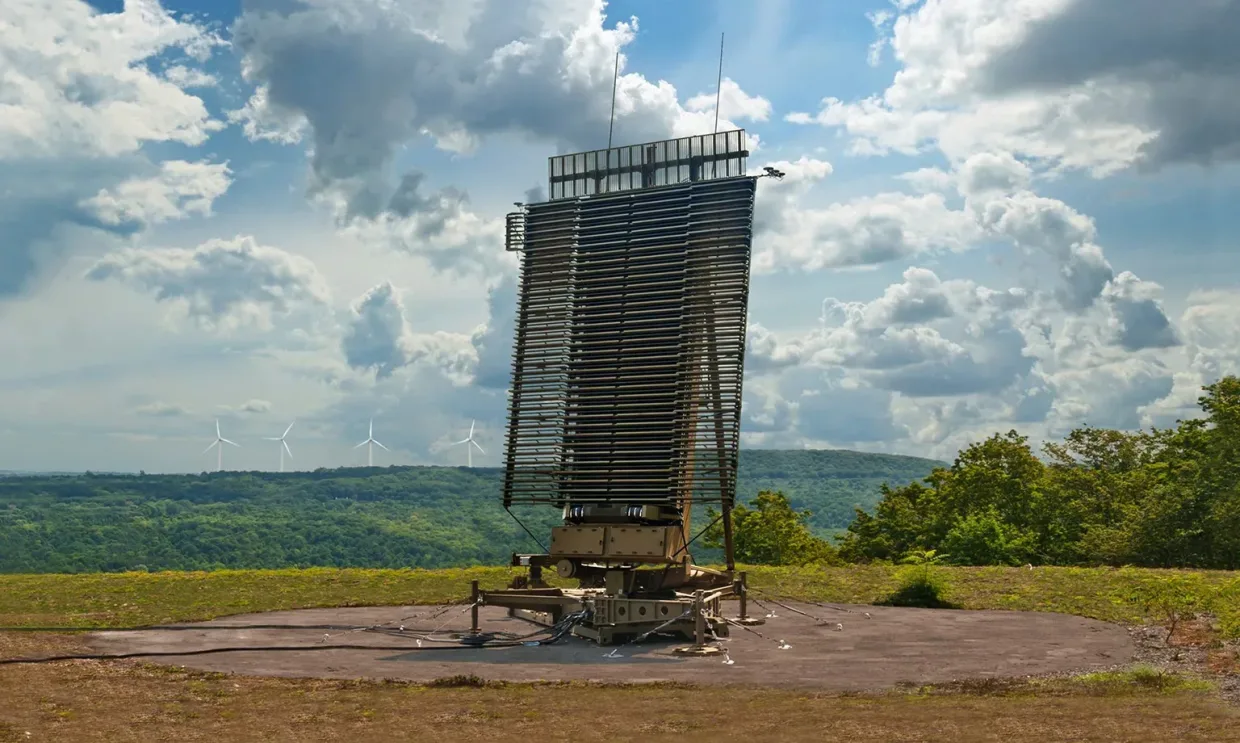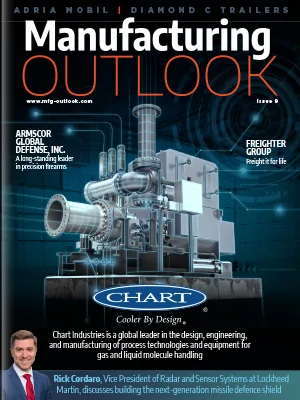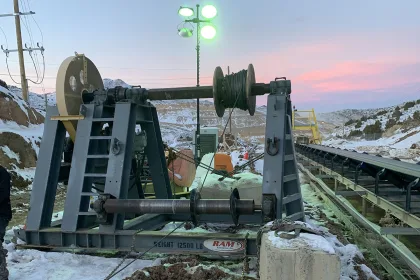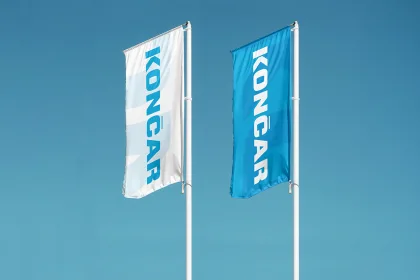PROVIDING CRITICAL SECURITY
In addition to Sentinel A4’s role of protecting warfighters in combat, the new radar has been selected to protect NCR and support the defense of Guam, a US island territory in Micronesia.
The new radar’s integration with NASAMS for NCR’s air and missile defense capability will provide critical security to vital strategic assets.
“Sentinel A4 with NASAMS for the NCR will be a tower-mounted, fixed air defense asset to detect the latest threats of our adversaries,” Marshall shares.
“Placing Sentinel A4 radars on towers to detect today’s modern threats and protect high-priority assets can be easily duplicated by other services and partner nations around the world.”
Utilizing the latest in gallium nitride (GaN) technology and a digital active electronically scanned array (AESA) architecture, Sentinel A4 provides both 360-degree and stop-and-stare capabilities with a 75 percent increase in range over the legacy system.
It also offers high performance in all conditions with the ability to detect threats amid bad weather, complex terrains, and contested environments.
“Lockheed Martin has been investing in GaN technology for radar applications since 2002 and was the first to produce radar systems featuring GaN with TPS-77 in 2015 and Space Fence, which became operational in 2020,” highlights Marshall.
In order to integrate with a broader defense system, Sentinel A4 interfaces with command and control, and sends collected data to help the user determine the next step in the engagement and protect the defended area.
Sentinel A4 works with the US Army’s current IAMD Battle Command System (IBCS) and Forward Area Air Defense C2 (FAADC2). Providing data to these two C2 systems allows them to leverage critical information to determine the best course of action to address a threat.
IBCS talks to the US Army’s Indirect Fire Protection Capability (IFPC) Increment 2, and as the primary sensor for IFPC, Sentinel A4 is integral in supporting critical asset protection.
COUNTER-FIRE SUPPORT
Then there is the TPQ-53 radar system, which has a rich history of protecting the US for more than a decade.
With proven experience in counter-fire support, the solid-state phased array detects, classifies, tracks, and determines the location of enemy indirect fire.
TPQ-53, which can be rapidly deployed, emplaced, and displaced, has consistently maintained greater than 95 percent operational availability, and Lockheed Martin continues to modernize and increase the capabilities of the radar as threats evolve.
For example, the company has added multi-mission capability, which enables the detection of unmanned aircraft systems (UAS) and other small threats, as well as added air surveillance capability for the medium-range detection of fixed wing, rotary wing, and UAS threats.
“We have been working with the US Army on TPQ-53 for over a decade, and our partnership continues to be one of excellence as we support operations, maintenance, repairs, and upgrades to deliver outstanding performance and reliability,” prides Marshall.
In late 2023, meanwhile, Lockheed Martin was contracted to extend the life of the Royal Danish Air Force’s two TPS-77 long-range transportable radars.
Expected to receive a mid-life upgrade by mid-2025, TPS-77 operates 24 hours a day, provides continuous high-quality 3D surveillance on air targets, and offers superior long-range detection and 360-degree azimuth coverage.
“Lockheed Martin was awarded the initial Danish contract in 2005 for two TPS-77 radars to enhance Denmark’s air surveillance capabilities. The systems are stationed at fixed sites but can be quickly redeployed when required,” Marshall expands.
TPS-77 is in service worldwide in Australia, Brazil, Estonia, Indonesia, Iraq, Jordan, Latvia, Malaysia, Pakistan, South Korea, the UK, and the US.
“Lockheed Martin has pioneered much of the technology that exists in the defense industry’s radar systems today, therefore setting the bar to deter adversarial threats and anticipate evolving battlespaces”
Chandra Marshall, Vice President and General Manager, Lockheed Martin Radar and Sensor Systems

BALLISTIC MISSILE DEFENSE
Lockheed Martin’s Long-Range Discrimination Radar (LRDR), designed and developed for the US Missile Defense Agency (MDA), is the next generation of ballistic missile defense. LRDR provides precise tracking and unparalleled discrimination of missile threats combined with simultaneous space domain awareness.
Just recently, LRDR was officially handed over to MDA in preparation for an operational capability baseline (OCB) decision and the final transition to the warfighter.
“This milestone represents years of dedication to MDA’s mission to protect our homeland. LRDR is a cutting-edge asset providing the benefits of both low and high-frequency radars for an innovative approach to searching, tracking, and discriminating targets,” says Marshall.
The radar is able to simultaneously search and track multiple small objects, including all classes of ballistic missiles, at long range and under continuous operation.
LRDR’s discrimination capability allows it to identify lethal objects, such as enemy warheads, and differentiate them from non-lethal decoys. Along with other elements of the Missile Defense System (MDS), which LRDR is integrated into, the radar conserves the number of ground-based interceptors (GBIs) required for threat engagement.
The highly adaptable LRDR features an open systems architecture designed to be scaled and extended to counter evolving threats without changing the hardware design.
Exemplifying this open systems architecture is LRDR’s added capability in support of hypersonic defense, giving decision makers actionable information to make fast, timely decisions.
In addition to missile defense, the radar system supports space domain awareness by monitoring satellites orbiting the Earth and detecting, tracking, and identifying active or inactive satellites, spent rocket bodies, and debris.
SPY-7 SUPERIORITY
LRDR technology has equally been leveraged and scaled for Lockheed Martin’s SPY-7 land and maritime radar product line.
“The SPY-7 radar product line uses LRDR technology to enhance overall strength against evolving threats,” Marshall explains.
“Providing 24/7 coverage, SPY-7 is a superior deterrence asset available for land and maritime applications around the world.”
A software-defined multi-mission radar, SPY-7 allows the rapid and efficient insertion of new capabilities and techniques, offers a threefold improvement in performance compared to current radars, and boasts advanced missile defense features that can’t be matched by any competitor.
Lockheed Martin successfully demonstrated SPY-7 in April 2024 for the Aegis System Equipped Vessel (ASEV), as the radar’s tactical hardware and software tracked objects in space. This served as a critical milestone as the technology will act as the cornerstone for Japan’s national defense.
It also verified the maturity of SPY-7, which is fully interoperable through the Aegis Combat System (ACS), and marked the beginning of comprehensive performance testing prior to delivery to Japan. Such vigorous testing will minimize risk and ensure the nation receives a fully integrated and calibrated system as quickly as possible.
“The Japan Ministry of Defense will field two ASEVs equipped with the SPY-7 radar system,” Marshall announces.
SPY-7 has already been radiating and tracking air and space objects at Lockheed Martin’s New Jersey facility since 2018. Japan, Spain, and Canada have also signed up to use SPY-7 in a sea-based capacity to protect their citizens.
“The world is changing rapidly, and countries need a radar that can evolve with it – SPY-7 is that radar,” she affirms.
“We are experts in radars; we’ve built and fielded them in all kinds of terrain. Wherever a partner may want this capability, we can work with them to realize that successfully.”
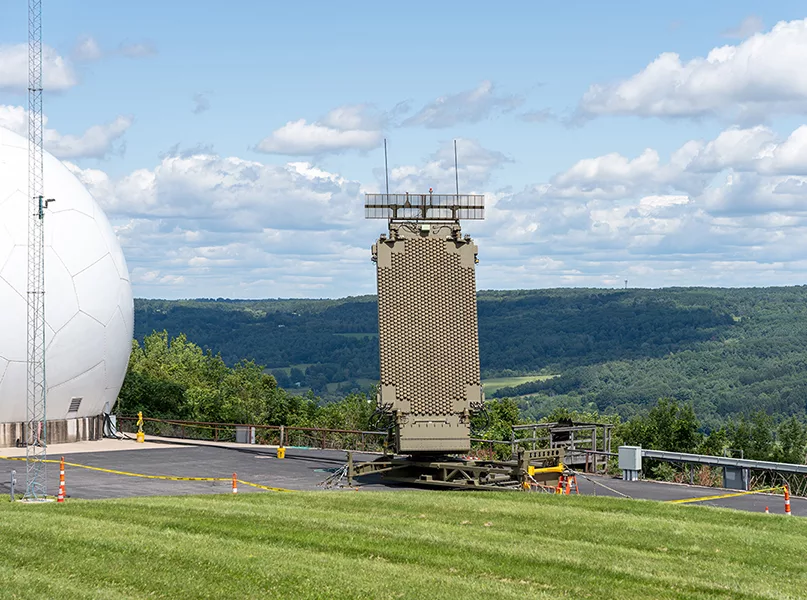
GROWTH OF PROJECTS AND PEOPLE
In addition to the roll-out of SPY-7, Lockheed Martin is looking ahead to growth through a strong pipeline of business.
One of the company’s top goals is to make sure it delivers quality products when customers require them.
“It’s that simple. Today’s warfighting environment and rogue threats are evolving every single day, and we help our customers bring solutions to the warfighters that will ensure safety and well-being. What we do is critically important, and I’m so proud to be a part of it,” Marshall beams.
“We have worked, and will continue to work, in concert alongside our customers and suppliers to find creative ways to ensure we can deliver products that keep military and civilians safe.”
To enhance the detection and protection of threats, it is imperative that Lockheed Martin’s systems continue to talk to each other and elevate how they collect and use data to predict and respond to what’s coming next.
“The speed of relevance is what will keep our homeland and our allies’ homelands safe from adversaries, and the Lockheed Martin radar and sensor portfolio is already a center of excellence, prepared to meet and exceed those demands,” she adds.
The company works tirelessly to make sure it is meeting the needs of not only its customers, but also the workforce.
Advocacy is of great importance to Marshall to ensure each individual is challenged, rewarded, fulfilled, and has the chance to grow within the company.
“In an organization as big as Lockheed Martin, it’s critical that we pay attention to all those who are working on our customers’ missions as if they were their own,” she sets out.
Today, supply chain disruption and labor shortages are some of the most challenging issues in the defense industry.
Filling open positions is therefore something that is also focused on daily by Lockheed Martin, who has been collaborating with economic development organizations and industry to address hiring needs and skill gaps.
“We continuously work to ensure competitive salaries, exciting work, and an overall great work environment,” enthuses Marshall.
Furthermore, there are many opportunities for women in the workplace, especially in manufacturing.
Lockheed Martin today is far more inclusive than it was in the past and recognizes the value of having a more diverse working environment.
“I’ve personally seen a lot more diversity over my career, and with that, I’ve witnessed a direct correlation to the strength and growth of our organization.
“Investment in our teams, whether through our formal mentorship initiatives, apprenticeships, continuing education, or training and leadership programs, is a given here,” Marshall concludes.
LOCKHEED MARTIN PARTNERS




